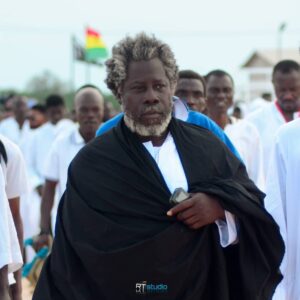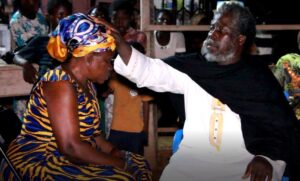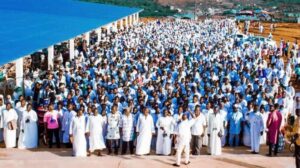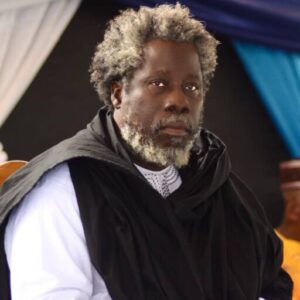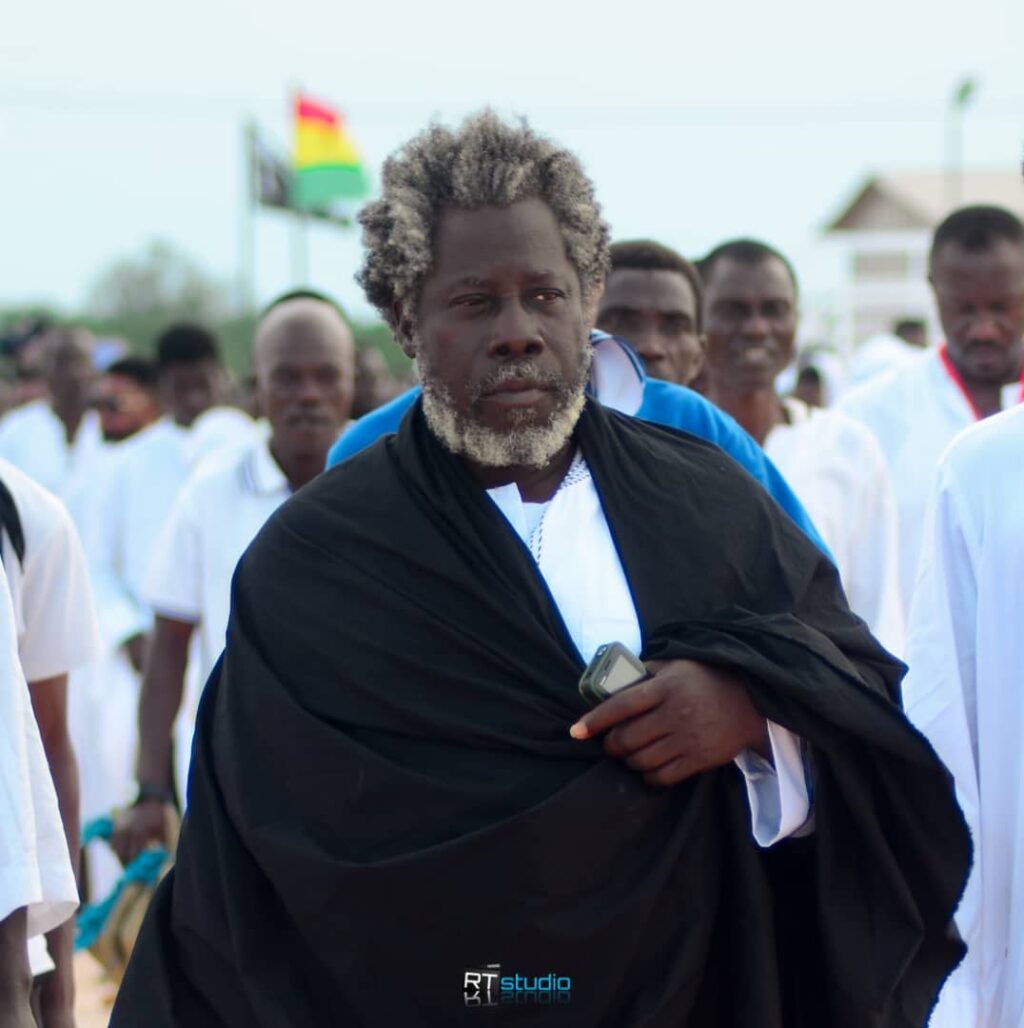
Criteria for Determining a True Religion of the
Most High God
Teachings of Okronkronyi Nyame Somafo Yawoh
Written by Mensah Adinkrah, Ph.D.
The determination of a True Religion involves assessing its origins, beliefs, and practices in light of divine instruction and revelation. According to the teachings of Okronkronyi Nyame Somafo Yawoh, certain fundamental criteria distinguish a True Religion from others. These criteria reflect the hallmarks of divine intervention, belief in the Most High God, and the provision of guidance for humanity.
Religion is Established by a Messenger of God
First and foremost, a True Religion is established by a Messenger sent directly by God. This Messenger serves as the divine intermediary, tasked with conveying God’s will and instructions to humanity. Throughout history, notable examples of such Messengers include Moses, Prophet Mohammed (Peace Be Upon Him), Jesus the Christ of Nazareth, and Okronkronyi Nyame Somafo Yawoh. Their divine commissions signify the authenticity of the Religions they bring.
Belief in the Messenger(s) of God
Second, unwavering belief in the Messengers of God is a defining characteristic of a True Religion. This belief underscores the acknowledgment of their unique role as conduits of divine wisdom and guidance. Followers are called to trust in the teachings and actions of these Messengers as they fulfill God’s mission on Earth.
Belief in a Single God: The Most High God, Creator of Heaven and Earth
Third, a True Religion is marked by its belief in a single, omnipotent God—the Creator of all things. Monotheism is definitive, requiring adherents to reject polytheism or reliance on spiritualists for assistance. Acknowledging and worshiping the Most High God as the sole author of creation reinforces the spiritual purity and focus of a True Religion.
Authentic and Sacred Scriptural Text
Fourth, a True Religion possesses a scriptural text that originates from the Most High God. This sacred text serves as a divine manual, providing instructions, laws, and spiritual insights for believers. Examples include the Koran for Muslims, the Torah for Israelites, and the Tum Nwoma (Book of Power) for adherents of Asomdwee Ntonton Som. These texts are revered as the direct words of God, offering guidance for both spiritual and worldly matters.
Temple of God for the Forgiveness of Sin
Fifth, a True Religion includes the establishment of a Holy Temple built by God’s Messenger. These Temples serve as sacred spaces for worship, repentance, and spiritual renewal. Recognizing humanity’s propensity to sin, the Most High God instructed His Messengers to construct Temples where believers can seek forgiveness and commune with Him. There are only 3 Temples of God. These are the Kaaba in Saudi Arabia for Islam, the Temple of Solomon in Israel for Judaism, and Nyankopon Ne Fie in Ekumfi Otuam for Asomdwee Ntonton Som.
The Religion is Supported by a Prophecy
One critical criterion for identifying a True Religion is whether it is supported by a prophecy. Prophecies serve as divine announcements of events or figures that will shape humanity’s spiritual journey. For example, the establishment of Asomdwee Ntonton Som fulfills significant biblical prophecies.
The prophecy in Malachi 4:5-6 foretells the coming of Elijah in the End of Days:
“See, I will send the prophet Elijah to you before that great and dreadful day of the Lord comes. He will turn the hearts of the parents to their children, and the hearts of the children to their parents; or else I will come and strike the land with total destruction.”
This Elijah, as revealed in the teachings of Asomdwee Ntonton Som, is Okronkronyi Nyame Somafo Yawoh, the Founder and Spiritual Leader of the Religion. His arrival fulfills this ancient prophecy, marking him as the divinely chosen emissary to bring God’s message and establish a new spiritual order in the End of Days.
Another prophecy affirming the emergence of Asomdwee Ntonton Som is found in Zephaniah 3:9:
“For then I will restore to the peoples a pure language, that they all may call on the name of the Lord, to serve Him with one accord.”
This prophecy aligns with the core practice of Asomdwee Ntonton Som, an exaltation Religion where worship is centered on calling upon the name of the Most High God in unity and devotion. The Religion’s emphasis on exaltation fulfills the vision of people coming together in a restored, pure language to serve God with one accord.
Knowing the True Name of the Most High God
A fundamental hallmark of a True Religion of God is the knowledge of the True Name of the Most High God. According to Okronkronyi Nyame Somafo Yawoh, the True Name of the Most High God is RABBI (Rah-Bee). This name originates from a Heavenly language and translates to “the Unseen God,” emphasizing His transcendence and mystery.
According to Okronkronyi Nyame Somafo Yawoh, no creation has ever seen RABBI. Even the Elijahs, who emanated directly from Him and stand only three feet from His divine presence, have not beheld Him. They hear only His voice, which conveys His will and instructions.
Okronkronyi Nyame Somafo Yawoh teaches that the name RABBI has been misunderstood and misinterpreted throughout history, often obscuring its true significance. However, understanding and invoking the name RABBI with proper reverence unlocks profound spiritual benefits for the invoker. It is through this name that one can draw closer to the Most High God and align themselves with His divine purpose.
Conclusion
In conclusion, the identification of a True Religion involves recognizing its divine origins, adherence to monotheism, reverence for God’s Messengers, the possession of a sacred text, and the establishment of a Holy Temple. These criteria, rooted in the teachings of Okronkronyi Nyame Somafo Yawoh, provide a framework for discerning the authenticity and divine purpose of any religion.

